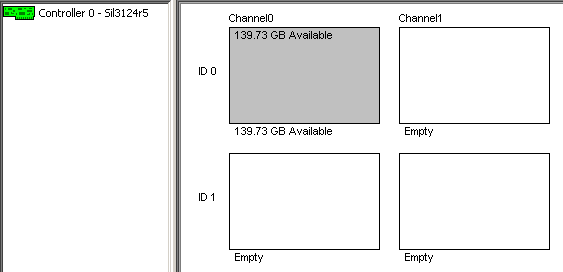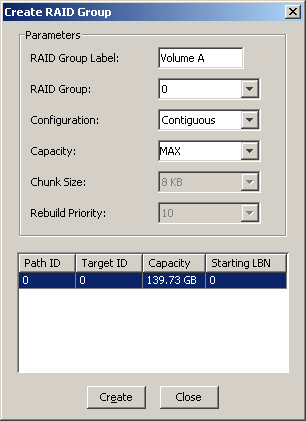Addonics CardBus Adapter: Bringing eSATA to Notebooks
Plug And Play Installation

The card has to be plugged into a free PCMCIA Type II / CardBus slot and Windows will immediately prompt you to install the drivers. We benchmarked read transfer performance of up to 70 MB/s, which is a good result given that we're running via CardBus. Write performance, however, is limited to less than 35 MB/s, which could be the case due to write verification.
The Addonics software is not very comfortable, but allows you to create RAID arrays that depend on the number of hard drives installed. If you directly connect two eSATA devices, you may configure RAID 0, RAID 1 or JBOD (just a bunch of drives) arrays. RAID 0 will give you maximum performance by stripping and distributing data across both drives. RAID 1 will increase data safety by writing content onto two drives simultaneously. Should one of the two drives die, you will still be able to access your data on the second drive. Obviously, RAID 0 adds the capacity of both drives, while the capacity of a RAID 1 is exactly that of a single hard drive. JBOD is the alternative, because it creates a single data repository by writing on the first drive and using the second one as soon as the first drive's capacity is reached. Most users would, however, likely go for single-drive setups.



Stay on the Cutting Edge
Join the experts who read Tom's Hardware for the inside track on enthusiast PC tech news — and have for over 25 years. We'll send breaking news and in-depth reviews of CPUs, GPUs, AI, maker hardware and more straight to your inbox.
Current page: Plug And Play Installation
Prev Page Addonics ADCBSAR5-2E Or: ESATA Via PC Card Next Page Test Setup
VESA introduces DisplayPort 2.1a standard, providing higher resolution and refresh rate combos and doubling cable length limit

Nvidia's problems with melting GPU connectors intensify — CableMod issues safety recall of 16-pin power adapters for Nvidia GPUs due to overheating and melting, advises disconnecting them immediately
Most Popular

